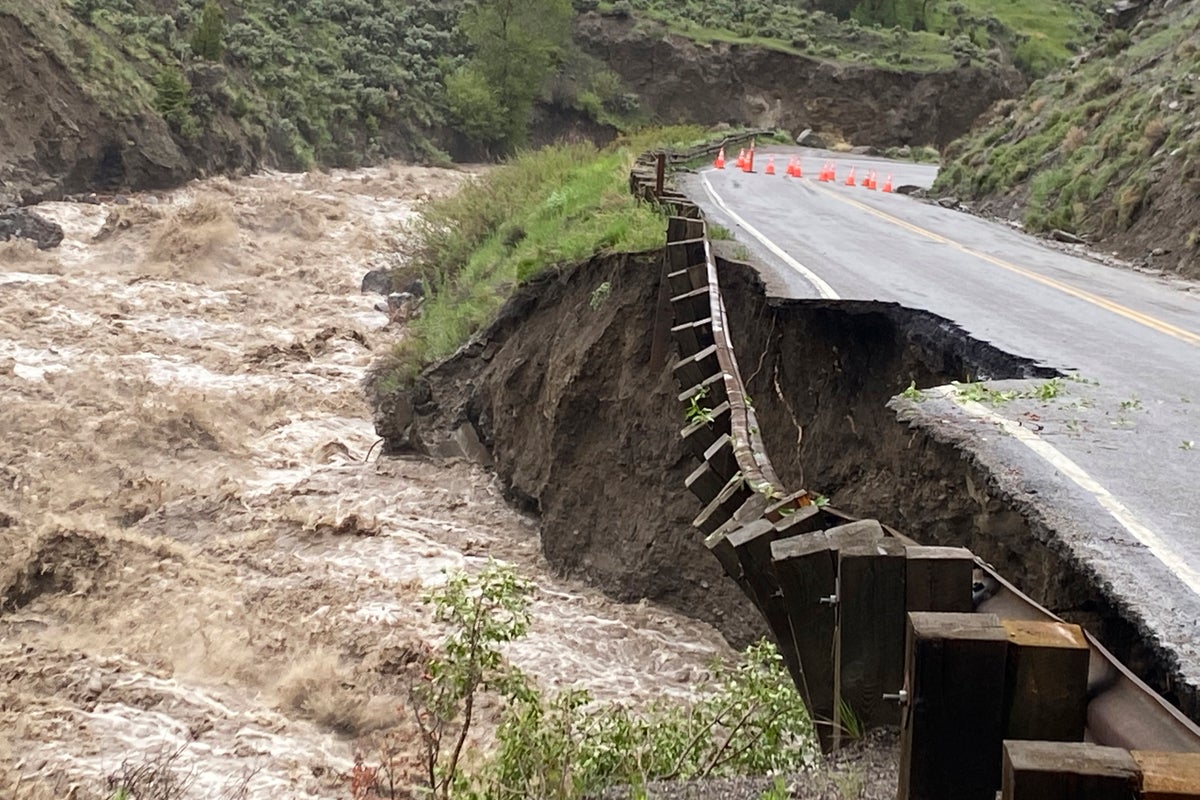
A series of “unprecedented” rainstorms have created chaos inside Yellowstone National Park, which closed its gates to visitors on Monday.
The severe weather caused mudslides, with multiple roads being rendered impassible, and a bridge getting destroyed.
"Our first priority has been to evacuate the northern section of the park where we have multiple road and bridge failures, mudslides and others issues," park superintendent Cam Sholly said in a statement.
Guests already inside the park have been evacuated, and no return date has been announced.
Video footage released the National Parks Service (NPS) shows the northern entrance road to the park from Gardiner, Montana destroyed as water rushes through the canyon.
Communities outside of Yellowstone like Gardiner have been isolated, as roads going in and out of town are rendered impassible.
One family staying in the area in a rental home told CNN they were stranded.
“The water levels were high on Saturday but within the past 10-12 hours things have gotten rougher,” said Parker Manning, who was visiting from Indiana.
Water levels on the Yellowstone River in Corwin Springs, Montana had blown past its previous record high by at least two feet, according to the US Geological Survey. Other rivers in the area were also far above normal levels.
Power is out in some parts of the popular natural park.
It is unclear when the park could re-open.
“We will not know timing of the park’s reopening until flood waters subside and we’re able to assess the damage throughout the park,” Mr Sholly said in the statement. “It is likely that the northern loop will be closed for a substantial amount of time.”
The flooding was caused by intense rainfall, coupled with increased snowmelt. The AP reports that the park saw 2.5 inches of rain fall from Saturday to Monday, with areas nearby recording up to four inches.
In addition, recent warmer temperatures have spurred increased snowmelt in the area, adding even more water to the landscape.
The park is one of the most popular outdoor recreation spots in the US, receiving more than 800,000 visitors a year on average.
The climate crisis is expected to bring significant change to the Yellowstone ecosystem, NPS says. In particular, warmer temperatures will likely bring decreased snowpack and a higher chance of wildfires.
Climate change may also bring more severe storms across the country. According to the US Environmental Protection Agency, more rain is now coming during intense rainstorms than in years prior — which could lead to more flash flooding events.
A recent study found that floods in the US would get “flashier” as the climate warms further, leading to quicker, more intense flooding events.







